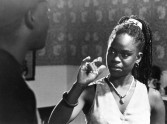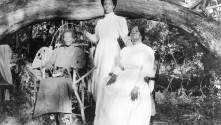
L.A. Rebellion: Creating a New Black Cinema
Since the late 1960s, a broad community of filmmakers from UCLA has emerged to energize and renew not just Black cinema but American cinema as a whole. What these filmmakers share is an institutional context rather than a consistent aesthetic or political approach. This “movement” is known by several names, the most prominent being “L.A. Rebellion.”
By the late 1960s, faculty and student activists were putting pressure on the handful of prominent film schools in the country to address the relative lack of diversity in American moviemaking by admitting more students of color. This question was a particularly sensitive one at UCLA, the public university just across town from both Hollywood and the site of the 1965 Watts Rebellion. In 1968, the university introduced the short-lived Ethno-Communications Program, an experimental affirmative action initiative that promoted the admission of not just Black but also Latino, Native American and Asian film students.
By the time it ended in 1973, the program had admitted a critical mass of students of color who continued to draw colleagues to UCLA for years to come. Especially remarkable is the number of Black filmmakers to emerge from this initiative: Charles Burnett, Julie Dash, Billy Woodberry, Haile Gerima, Jamaa Fanaka, Barbara McCullough, Larry Clark, Alile Sharon Larkin, Ben Caldwell and Zeinabu irene Davis, to name only the best-known.
This program, organized by scholars at UCLA and the programmers and curators of the UCLA Film & Television Archive, provides an extensive introduction to the work of these filmmakers. The program covers more than thirty years, with a special focus on the 1970s and ‘80s, and includes work by nearly two dozen directors, thus affording a panoramic look at the diversity of artists within the “L.A. Rebellion” rubric.
The films themselves embody a variety of styles, from classical narrative storytelling to neorealism and beyond. Many of the filmmakers are engaged in a stylistic research that draws on the modernist self-reflexivity of much of the experimental filmmaking of the period, African and African American musical and narrative traditions, montage and various strains of expressionist and surrealist avant-garde cinema.
In the process, the films speak powerfully against racial and class oppression and espouse a variety of political positions, including Black Power, Afrocentrism, second-wave feminism and anti-colonialism. Above all, they affirm the ability of the African American experience to generate powerful and moving cinematic images. — David Pendleton

















